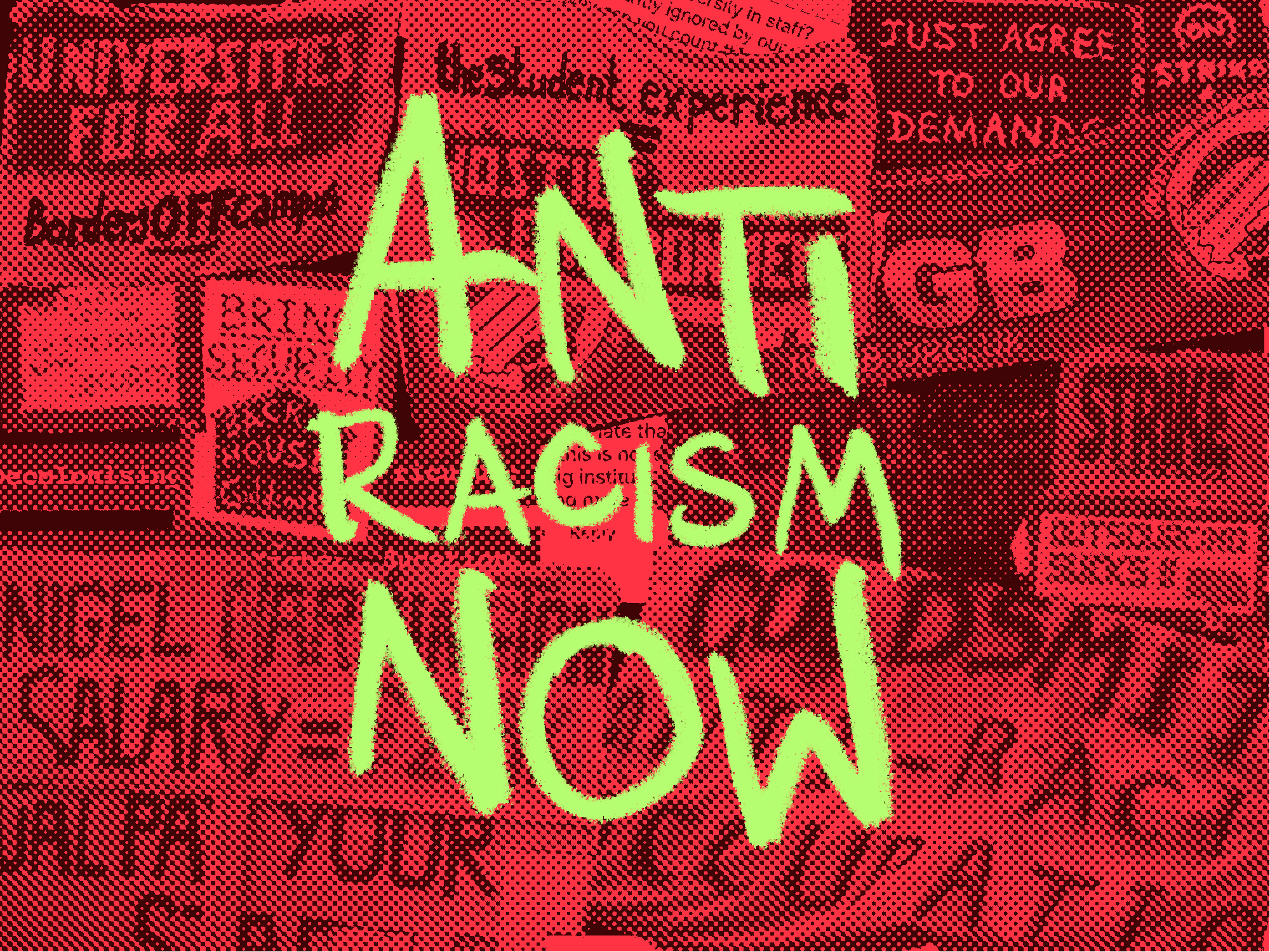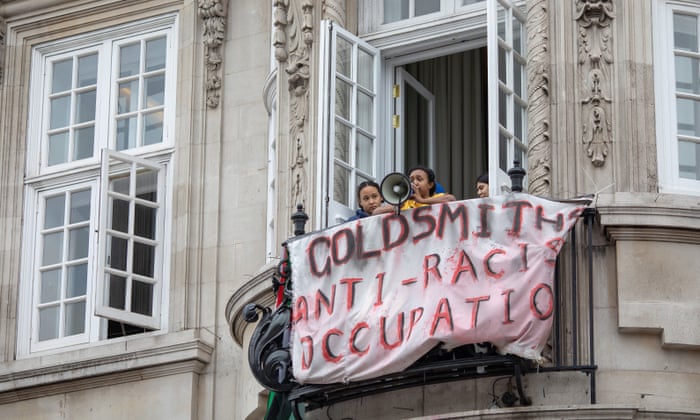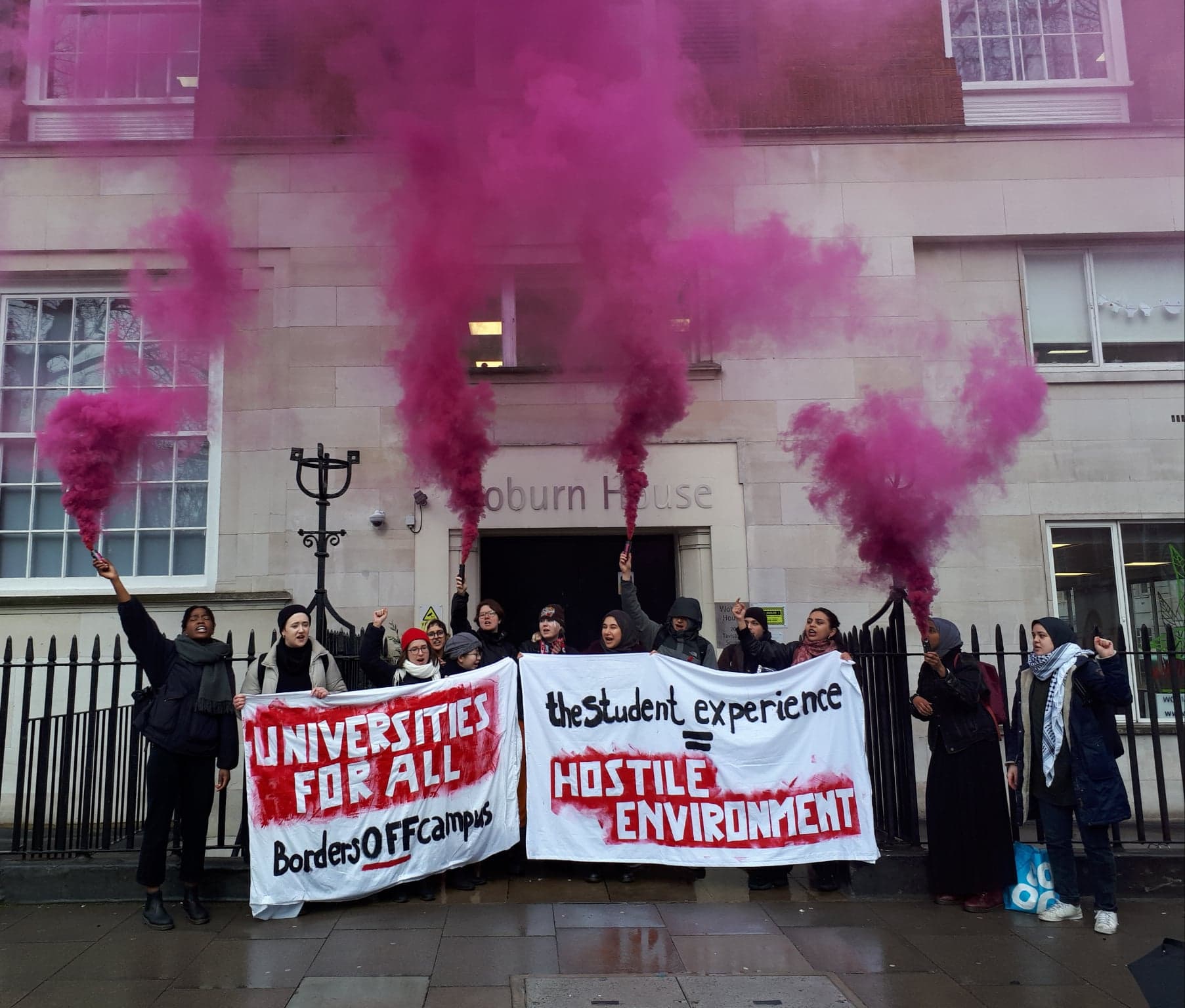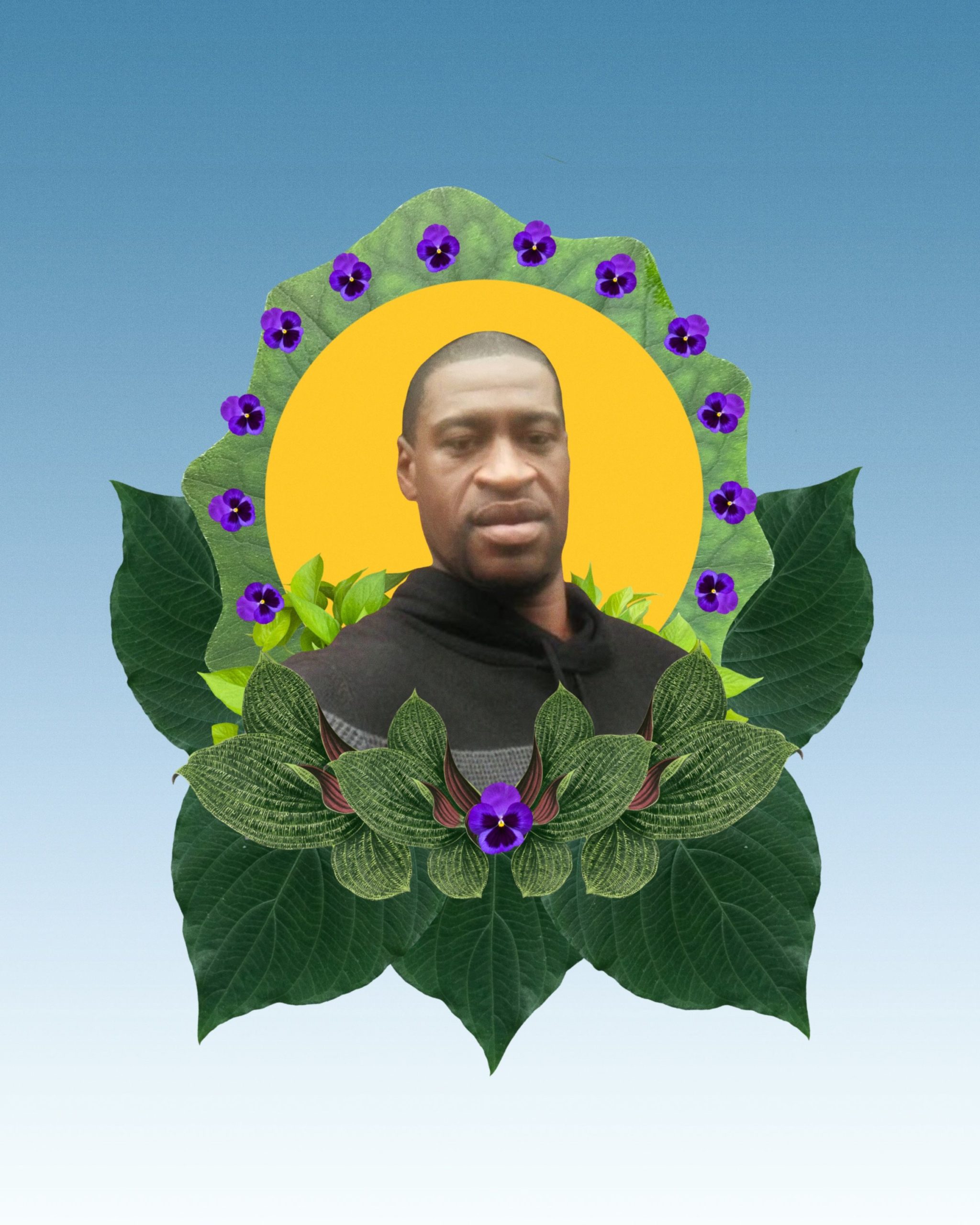
The last few months have seen universities engulfed by a roaring wave of demands for accountability. The police murder of George Floyd, whose name will be forever etched in the archive of 2020, sparked a revolution that called for the acknowledgement of anti-Black racism not just in the police force but across the full spectrum of society. It was in this spirit that many universities chose to show their solidarity with the movement on social media. Their response was met with scepticism from students who, catalysed by their experiences of racism within these institutions, questioned the performative nature of universities’ responses.
While 2019 saw the highest ever recorded number of protests, 2020 has redefined what it means to march. Since the pandemic has restricted access to the streets, students have been taking to online platforms to voice their experiences with racism at art schools. While social media provides a veil of anonymity, effectively creating a safe space for individuals to be heard, there has also been a recent reckoning with the inability of internet culture to address nuance.
The native tool of Gen Z, social media acts as an instrument of immense power—if you understand its intricacies. It can give a voice to those marginalised by societal power structures, hold great institutions accountable and shame individuals without a second glance. Many of the twenty-first century social justice movements, such as Me Too and Black Lives Matter, were amplified by social media and arguably wouldn’t have had the same scope without it. Due to the democratic nature of the platform (anyone can start an account) and the fleeting nature of the attention economy, it can be difficult to differentiate between trolls, agitators and movements that instigate real change.; often the line separating them simply depends on the opinion of who you ask.
“While 2019 saw the highest ever recorded number of protests, 2020 has redefined what it means to march”
Instagram account @ualtruth was set up as an anonymous space for University of the Arts London (UAL) students and staff to share their experiences with racism. When UAL posted a black square on Instagram in solidarity with Black Lives Matter, the admins of UAL Truth were angered by the “performative” nature of the statement, and felt “deeply offended by their hypocrisy”, as they tell me. Having “personally experienced racism, prejudice and discrimination endlessly while at UAL”, they decided to take matters into their own hands after their claims were dismissed by the university. Labeled by staff “as a ‘militant and aggressive campaign’ that is ‘defamatory’, ‘nasty’ and to be ignored’”, the anonymous admins behind UAL Truth admit that “accountability could feel like an attack when you’re not ready to acknowledge how your behaviour has affected others”.
When I ask if they feel that change has been instigated by their efforts, they respond that the account has uncovered the scale and severity of institutional racism present at UAL. “We have received many messages of immense gratitude in response to creating this page that allows BIPOC to speak their truth. Many previously felt isolated in their experiences… [and] have now come to realise that they are not alone.” The admins stress that this has created a sense of reassurance and comfort to many “who were previously led to believe that these struggles were an ‘overreaction or delusion’”
Jeremy Till, the Head of Central Saint Martins (a college within UAL), is repeatedly apologetic when we speak over the phone about the fact that the university had not done enough to combat institutional racism. “To say [this moment] is a wake up call is to trivialise the depth of the issue… but it’s made people like me, and white patriarchal power, wake up to reality and look at it firmly in the face”. On the subject of UAL Truth, he chooses his words with care. “I feel really uncomfortable about issues of such complexity being played out through social media… I feel very uncomfortable that [the students] feel that… their only recourse is that.” He adds that this “is also part of the [UAL anti-racist] action plan, to look at those internal mechanisms for reporting [racism] and make them easier and safer.”
The admins of UAL Truth explain that the current complaints process at UAL is “intentionally prolonged and extremely exhausting… If a complainant manages to soldier through to the end, they are met with no positive outcome or adequate action.” They add that “such processes at UAL have allowed experiences of racism to remain consistent; enabling them to recur uninterrupted due to inadequate results and repercussions. We think it’s important UAL… begin to acknowledge that students HAVE been reporting, complaining, protesting through these institutional procedures but are continuously being disregarded and rejected.”
Accountability and transparency is key to instigating change. I press Till about how UAL will hold themselves accountable to their anti racist action plan, which includes a commitment to diversifying staff, improving the reporting, monitoring and resolution processes, and decolonising the curriculum. “There will be KPIs within that—the main thing that holds us to account is the fact that we’re going to publish it and people can come back and say, ‘You haven’t done it.’”

“We have received many messages of immense gratitude in response to creating this page that allows BIPOC to speak their truth”
Last year, Deptford Town Hall was occupied by students at Goldsmiths university in an anti-racist protest; a group was created named Goldsmiths Anti Racist Action (GARA). The occupation lasted for 137 days, and ended with a signed agreement between the senior management team and GARA, where the staff agreed to uphold all their demands. While some points were similar to those mentioned by UAL Truth, others were much more specific, such as calls for budget allocations to Black History Month, the reinstatement of two Palestinian scholarships, funds for a reparative justice programme, alongside an open call for BAME academic researchers, and greater local community access to Deptford Town Hall.
I email one of the core members, Yesenia Ramirez, to ask how she feels a year after signing a contract with the GARA, when Goldsmiths have recently chosen to end the employment of hundreds of mostly Black and PoC staff due to the pandemic. “The university performs a radical-ness but continuously contradicts itself and perpetuates institutional racism in all forms. The move to end the employment of precarious staff comes alongside public statements on BLM in the aftermath of the murder of George Floyd—statements in which the institution and the Warden state that Goldsmiths is standing ‘shoulder to shoulder’ with Black staff and students… this only re-affirms that any display of a promise or commitment in tackling racism on campus is nothing but a PR stunt that tries to portray a violent institution like Goldsmiths as progressive.” The university has so far fulfilled eight of the 18 demands they agreed on.
Visible public statements are clearly not enough to ensure the university will keep its word. When I query Ramirez about whether art schools can ever truly be anti-racist, she stresses that there “needs to be a complete dismantling of the governance system and foundational basis of any institution in the UK if it intends to be truly anti-racist.” She goes on to add that even the idea of what constitutes art is deeply rooted in colonial history. “We don’t think any ‘Western university’ can be truly anti-racist as it will aways be rooted in racial capitalism—but we can take actions to make these spaces more survivable for Black and PoC students, staff and all workers across campus.”

Dori Tunstall, Dean at Ontario College of Art and Design, and the first Black Dean of a design faculty, has a different outlook. She tells me about the forums through which Black students have expressed their feelings about the Eurocentric, exclusive nature of the university curriculum, and what OCAD is doing to change that. The relationship between students and faculty already seems different to other universities—Tunstall tells me about how supportive they have been of students engaging in the recent protests, offering de-escalation training for encounters with police or advice on how to wash out your eyes after being tear-gassed, and there are activists present within the faculty. “I always say to them, as a Dean, I’ll be there designing the poster boards for you; I’ll be writing the cheque if I need to bail you out of jail. I’ll be there.”
While acknowledging that there is still work for OCAD to do in terms of decolonising its curriculum and increasing the number of Black students through scholarships, Tunstall tells me about recent successes they had during their Black cluster hire. Tunstall emphasises the importance of hiring a group of people at once. “You want to reach a critical mass, so [the individuals] don’t feel isolated… we knew by hiring one by one that we can’t retain them.” She goes on to describe how, for two years, she engaged with Black and Indigenous communities in the vicinity, attending small gatherings and strengthening the institution’s ties so the community felt entitled to use the space. “That’s what decolonisation is about… is for them to walk into the space [at the university] and say this is ours, so can I have it on a Tuesday night at 8PM? The fact that they feel like they can claim our resources… that’s how we know the work is being done.”
View this post on Instagram
During the hiring process, there were also lessons learned about language. Tunstall created “a job description that spoke to the things [applicants] valued about who they were as makers” and worked to redefine the standards of qualifications. Instead of asking for two years of teaching experience, perhaps applicants gave an industry talk, or a testimonial to the government on behalf of a social organisation, so they still know how to present ideas but in a different context to traditional academic spheres. Tunstall also highlights the cultural competency training that staff undertook as a big factor in creating an inclusive culture. “Our faculty had to do a lot of work themselves in order to be prepared to embrace this cluster hire and welcome them into the community.”
Through the important work that she has achieved, Tunstall makes the case for hiring a diverse set of Deans to instigate real structural change. “We are the power centre in the institution… I write job descriptions, I negotiate the budgets around how many people we can hire or not hire… I create the condition in which the work can happen but [the faculty] do all the work.” She hopes that the self reflection of both institutions and individuals in the wake of George Floyd’s death “will move structures… anyone who says it’s not possible, it’s [actually that] you just don’t want to do it. At OCAD we decide that [with] what little resources we have, this is what we’re going to prioritize, because it’s important to the values that we have around decolonization, diversity, equity, sustainability.”
“As a Dean, I’ll be there designing the poster boards for you; I’ll be writing the cheque if I need to bail you out of jail. I’ll be there”

When I ask Till of Central Saint Martins how you can change the culture of a university, he points to the same nucleus as Tunstall: the values that they hold. The performance of these values without the real work behind them seems to be the issue at the heart of of numerous institutions, as shown by Goldsmiths’ pivot on their anti-racist promises at the end of GARA’s occupation. Meanwhile, Tunstall’s work at OCAD demonstrates the time and energy, both mental and emotional, that she dedicates to all facets of anti-racism work, as well as the efforts made by staff to ready themselves for the cluster hires. The lack of understanding around the amount of work that anti-racism requires is often underestimated by universities looking for quick fixes and progressive optics. The constant accountability, the monetary investment, the mistakes made and lessons learned—it’s exhausting, heavy graft.
As art schools begin to educate online under the new conditions of the pandemic, will our screens act as a mirror reflecting their current structure, or will this virtual shift provide a new opportunity to redistribute power and build anew? Although there may be disagreement around whether universities built on colonial ideals can ever be truly anti-racist, students and staff both agree that things need to change. It seems down to senior staff members to instigate this: Deans, Vice-Chancellors, Directors and Presidents. Only time will tell whether they are truly ready and willing to shift power.





